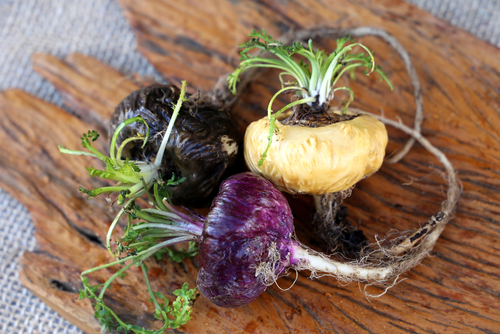There was a chapter in my life when my energy was just… gone. Not the kind of tired that sleep fixes, but a deep depletion that crept into everything—my mood, my focus, my cycle, even my sense of self. I tried pushing through. I tried more caffeine. I tried ignoring it.
None of that worked. What helped was something surprisingly simple: maca.
Maca root didn’t hit me like a stimulant. There was no buzz or crash. But day by day, I felt stronger. Clearer. My mood stabilized. My hormones stopped swinging like a pendulum. And my energy—not the artificial kind, but the real kind—started to come back.
It’s easy to underestimate maca because it’s just a powdered root. But this humble plant from the Peruvian Andes has been used for centuries to nourish energy, resilience, and hormonal rhythm. And once I began working with it intentionally, it became one of the most trusted tools in my wellness toolkit.
What Is Maca, Really?
Maca is a root vegetable that grows in the high-altitude regions of Peru, where the air is thin and the climate is extreme. The people who live there have been cultivating and consuming it for over 2,000 years—using it to build stamina, support fertility, and restore vitality in harsh conditions.
It’s an adaptogen, meaning it helps the body regulate stress and restore balance over time. But it’s also a functional food—packed with amino acids, minerals (like iron, calcium, and potassium), and plant sterols that work on a cellular level to support the endocrine system.
Where it really shines is in hormonal health. Unlike hormone replacement or synthetic stimulants, maca doesn’t contain hormones—it helps your body create and balance its own. That distinction matters.
Types of Maca & Their Unique Benefits
Not all maca is the same. In Peru, locals distinguish between several colors of maca root, each with its own properties. Most commercial products blend all types together, but if you’re looking for something more targeted, here’s what to know:
Yellow Maca
The most common and widely studied variety. Yellow maca offers balanced support for overall energy, mood, and hormonal resilience. It’s a great starting point if you’re new to maca or looking for general adaptogenic benefits. It’s also considered the most neutral in flavor.
Best for:
-
Daily energy
-
Mood support
-
Gentle hormonal balance
Red Maca
Known for its calming and nourishing properties, red maca is often used to support reproductive health, especially in women. Some research points to its positive effects on prostate health in men, but it’s most celebrated for its role in easing hormonal fluctuations and promoting emotional stability.
Best for:
-
Menstrual and perimenopausal support
-
Bone density
-
Emotional regulation
Black Maca
Considered the strongest of the three, black maca is more stimulating and energizing. It’s used traditionally to boost stamina, libido, and cognitive function—especially in men, but many women find it beneficial too.
Best for:
-
Physical performance
-
Mental clarity
-
Libido and endurance
When I began taking maca, I started with yellow. After a few months, I experimented with red during my luteal phase, and black during times of high demand. Each one has its own tone—like different keys on a piano. The right combination just depends on the rhythm your body needs.
How to Use Maca: Best Practices for Real Results
Maca is incredibly versatile and easy to integrate, but to get real benefits, consistency and dosage matter.
Start Small
Begin with 1/2 teaspoon per day, especially if your system is sensitive or new to adaptogens. Gradually build to 1–2 teaspoons daily. More isn’t always better.
Take It in the Morning or Early Afternoon
Maca can be energizing, especially black or yellow varieties. Take it earlier in the day so it doesn’t interfere with sleep.
Cycle It
Some people benefit from taking maca for 3 weeks on, 1 week off—especially if using it for hormone support. Others take it continuously but adjust based on their cycle or needs. Listen to your body.
Pair It with Healthy Fats
Maca is fat-soluble, meaning it’s better absorbed when consumed with a bit of fat. Try it in smoothies with nut butter, coconut oil, or full-fat plant milk.
Favorite Ways to Enjoy Maca
Its earthy, nutty, slightly sweet flavor blends beautifully with warm, grounding foods.
-
In a morning smoothie with banana, cacao, almond butter, cinnamon, and oat milk
-
In oatmeal or porridge, stirred in with flax, maple, and a splash of vanilla
-
In lattes, especially paired with cacao or chai spices for a nourishing alternative to coffee
-
In energy bites, mixed with dates, seeds, and coconut flakes
-
In baked goods, like muffins or pancakes for a hormone-friendly twist
When used regularly, it becomes less of a supplement and more of a staple—something you reach for not because you’re trying to fix something, but because it helps you stay rooted in your own rhythm.
Storage & Sourcing
Look for gelatinized maca—not raw—especially if digestion is sensitive. Gelatinization is a heating process (not the same as adding gelatin) that makes maca more bioavailable and easier to digest.
Choose organic, fair trade sources where possible. Maca’s popularity has led to over-harvesting in some regions of Peru, so supporting responsible companies helps protect the land and the farmers who’ve cultivated it for generations.
Final Thoughts
Maca isn’t a quick fix. It’s a slow, steady ally that helps your body return to its natural intelligence. Over time, it reminds the endocrine system how to function with grace. It doesn’t override your rhythm—it helps you reconnect with it.
If you’re navigating fatigue, hormonal shifts, mood swings, or just feeling disconnected from your own body’s energy cycles, maca offers a grounded place to begin. It’s not hype—it’s heritage. And when used with care, it can be the quiet support that carries you through seasons of change with more strength, stability, and ease.



























